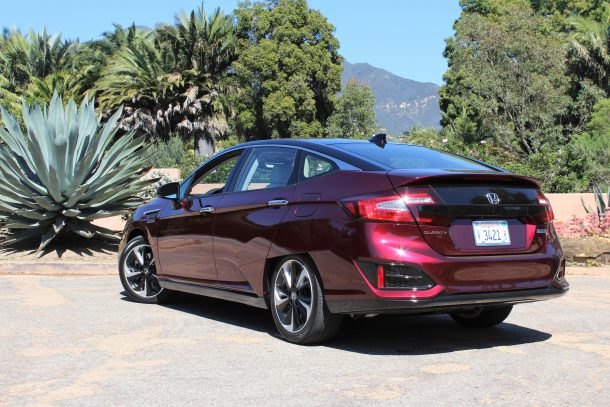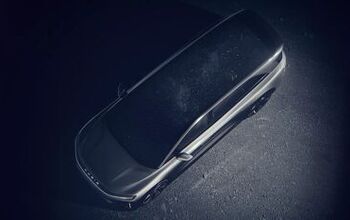It's Frustrating Times for Owners of Hydrogen-powered Cars

They’re the rarest breed on the road, drawing their car’s fuel source from the world’s most plentiful element — which just happens to be the hardest to get your hands on in any large quantity. Fuel cell vehicle drivers, of which none exist outside of California, depend on a small network of H2 refueling stations to stay on the road, and the drawbacks to using this rare power source are already well documented.
You’ll be renting a car if your road trip takes you too far from San Francisco or the SoCal area. Supply issues sometimes leaves that one nearby station out of service, as happened earlier this year. It’s almost as if a vehicle you plug into a wall is a better green idea, at least on the downstream side.
Regardless, these Honda Clarity FC, Toyota Mirai, and Hyundai Tucson FC owners made their bed and were prepared to lie in it. Unfortunately for them, the refueling network has once again revealed its fragility.
As revealed by Tire Meets Road, it isn’t just supply issues affecting the H2 pumps. The unique nature of H2 stations means the need for maintenance is greater than, say, your local Mobil or Shell station. And, when enough of the single-vehicle H2 stations are out of commission, it puts pressure on the ones that remain.
The hydrogen tanks at these stations can only fill about 40-50 vehicles before running dry, after which it’s an arduous process to compress the delivered hydrogen on-site. California currently has 33 stations in the two geographical areas, serving roughly 4,200 drivers (as of April). There’s also one in Sacramento and another bridging L.A. and San Fran.
Right now, drivers in the SoCal area are probably considering taking their spouse’s Prius to work. With six of the region’s H2 stations out of service for maintenance, increased demand has led three more to go dry, leaving just 11 stations for the entire area spanning from Santa Barbara in the north to Del Mar in the south.
While some of the shutdowns are due to routine maintenance that can go overlong, a broken compressor — the cause of one of the shutdowns — can lead to a much longer wait. That part must be sourced from overseas.
Hydrogen fuel cell vehicles create their own electricity from a chemical reaction; essentially, they’re an electric car with an onboard powerplant feeding the juice directly to the electric motor. In the early years of the 21st century, as the first hybrid cars were just beginning to appear on North American roads, the fuel’s potential led to big headlines about a future powered by hydrogen. However, in the ensuing years, interest in electrification quickly overtook fuel cells. It’s a lot easier to generate electricity and deliver it to the consumer than pull hydrogen out of the environment. The fledgling H2 network shows it.
While a few automakers still hedge their bets and include hydrogen in their green vehicle stable, the industry has more or less decided that electrification is the way of the future. A quick search of the U.S. Department of Energy website shows 18,644 electric vehicle charging stations in the U.S.
[Images: Steph Willems/TTAC]

More by Steph Willems
Latest Car Reviews
Read moreLatest Product Reviews
Read moreRecent Comments
- ToolGuy First picture: I realize that opinions vary on the height of modern trucks, but that entry door on the building is 80 inches tall and hits just below the headlights. Does anyone really believe this is reasonable?Second picture: I do not believe that is a good parking spot to be able to access the bed storage. More specifically, how do you plan to unload topsoil with the truck parked like that? Maybe you kids are taller than me.
- ToolGuy The other day I attempted to check the engine oil in one of my old embarrassing vehicles and I guess the red shop towel I used wasn't genuine Snap-on (lots of counterfeits floating around) plus my driveway isn't completely level and long story short, the engine seized 3 minutes later.No more used cars for me, and nothing but dealer service from here on in (the journalists were right).
- Doughboy Wow, Merc knocks it out of the park with their naming convention… again. /s
- Doughboy I’ve seen car bras before, but never car beards. ZZ Top would be proud.
- Bkojote Allright, actual person who knows trucks here, the article gets it a bit wrong.First off, the Maverick is not at all comparable to a Tacoma just because they're both Hybrids. Or lemme be blunt, the butch-est non-hybrid Maverick Tremor is suitable for 2/10 difficulty trails, a Trailhunter is for about 5/10 or maybe 6/10, just about the upper end of any stock vehicle you're buying from the factory. Aside from a Sasquatch Bronco or Rubicon Jeep Wrangler you're looking at something you're towing back if you want more capability (or perhaps something you /wish/ you were towing back.)Now, where the real world difference should play out is on the trail, where a lot of low speed crawling usually saps efficiency, especially when loaded to the gills. Real world MPG from a 4Runner is about 12-13mpg, So if this loaded-with-overlander-catalog Trailhunter is still pulling in the 20's - or even 18-19, that's a massive improvement.



































Comments
Join the conversation
You'd have to be a fool to not consider leasing a Clarity fuel cell if you live in California. $2800 down with a $380/mo payment and they give you a $15k credit to use on hydrogen fuel - enough for the 36 month lease - and 3 weeks rental car for times when you need to travel out of the local areas. You get a 5k stipend from the state and carpool tag. That stipend pays for your down payment and about 1/2 of the tax. My number crunching says this ride would cost me $230/mo after factoring in the credit I get for not buying fuel in addition to the lease. I drove it at the LA car show 2 years ago. It felt like any other electric car, but the materials, infotainment, seat comfort were all good. Haven't driven the Toyota or Hyundai hydrogen cars, so I can't speak to those. The hate H is getting is strange considering the cost to the customer.
Years ago I was doing work with Marhwoeks and Ford and the Lawrence Lvermore Lab. The conclusion about hydrogen boiled down this (was compressed down to this) to this: as a fuel for mobile transportation Hydrogen can NEVER COMPETE with its’ power source. IE: The gargantuan amount of Electricity needed to separate O2 and H .. added to the electricity needed to compress H for storage ... well... it needs no further explanation... the average normal human being type person can figure out the rest all by themselves.